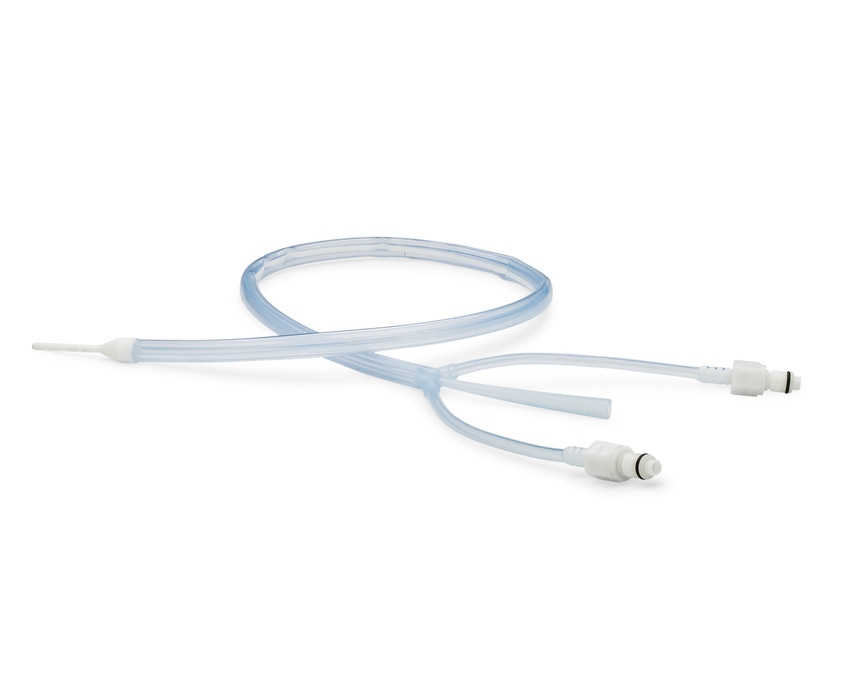The Chicago-based company said it is vying for a new label indication for ensoETM to reduce thermal injury to the esophagus during cardiac ablation procedures. The ensoETM device has FDA clearance for whole body temperature management using the esophageal space.
November 22, 2019

Attune Medical is hoping to get a label expansion for its device to reduce thermal injury to the esophagus during cardiac ablation procedures. The Chicago, IL-based company said its ensoETM device is being evaluated in several clinical studies to generate data for this claim.
As it stands now the ensoETM device is FDA cleared for whole body temperature management using the esophageal space, but it has not been cleared by the FDA for reduction of thermal injury to the esophagus.
“We learned through our customers that some of them had begun to use our product to deal with the side effects of cardiac ablation and that relates to injury of the esophagus,” Keith Warner, Attune Medical’s CEO, told MD+DI. “So specifically, an electrophysiologist in London began to use our device for this purpose. We have started four significant studies.”
Attune Medical said the risk of complications related to cardiac ablation procedures is generally low, although certain risks are associated with high levels of mortality, such as injury to the esophagus, which occurs in about 15 to 40% of cases.
A much smaller percentage of these (~0.25% incidence) can progress into atrioesophageal fistula (AEF), which is fatal in up to 80 percent of cases. Esophageal thermal injury (ulceration) is likely the initial injury that leads to AEF formation and can take two to four weeks to progress clinically, making diagnosis difficult.
A standard safety method often used to mitigate this type of injury is a luminal esophageal temperature (LET) probe that measures internal esophageal temperature changes during the application of ablation energy.
“A temp probe only activates and displays an increase in injury once the energy permeates the esophageal wall and makes it to the sensor inside the esophagus,” Warner said. “So, the damage has already begun.”
He added, “Many EP’s spend a lot of time moving the temp probes, so they are always near the site of ablation. To do that they use a lot of fluoroscopy. When our device is used there is no temp probe, there are no alarms, there’s no need for fluoroscopy or moving anything – because we bring the esophagus down to at or near four degrees, which is the temperature of the water going through our device in the case of RF Ablation.”
Attune Medical’s ensoETM is a single-use thermal regulating device that is placed in the esophagus (similar to a standard orogastric tube) and connected to an external heat exchange unit, creating a closed-loop system for heat transfer to increase or decrease patient temperature.
Its placement in the esophagus, with proximity to blood flow from the heart and great vessels, allows highly efficient heat transfer. Unlike surface warming devices, ensoETM‘s internal placement doesn't impede patient access during surgery and allows gastric decompression and administration of fluids and medications.
The company plans to meet with FDA to find out the appropriate path in garnering an expanded label indication.
“We’ve undertaken [several] meetings with FDA,” Warner said. “We’re in the process of discussing what our current data looks like and our methods of analyzing that data. We intend to meet with FDA again in the next couple of months and take that to the next step. I think once we meet with them one more time we’ll have a much clearer picture of what the path toward a label claim will look like.”
Attune has been resonating with investors. In September of last year, the firm raised $15 million in an oversubscribed C round. If the company is successful in obtaining a new label indication it could seek out additional funding.
“We finished a successful $15 million series C and that went quite well,” Warner said. “We’ll probably begin to engage with investors in the first or second quarter of next year.”
About the Author(s)
You May Also Like




